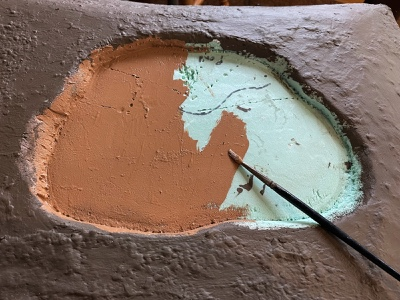 |
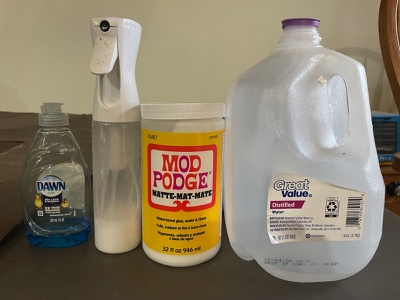 |
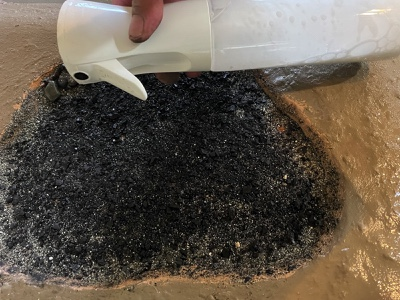 |
Scenery work continues on Terry's cabin scene. John shifted his focus to the pond. He began by painting the bottom of the pond brown in case any of the rock/sand layers don't completely cover the green foam board. |
John used four basic items for the next two steps. For the first step, Mod Podge was spread over the pond (not shown). John then applied black stone acquired from the banks of a Seward waterfall which was followed by a light layer of sand from the beach at Clam Gulch. John had accumulated these materials over a decade ago. |
After the rock/sand layers had dried for 48 hours, John applied additional adhesive made from one part Mod Podge, two parts water and a few drops of liquid soap (to break the surface tension). He applied this mixture with a special mist sprayer which doesn't disturb the rock/sand materials. |
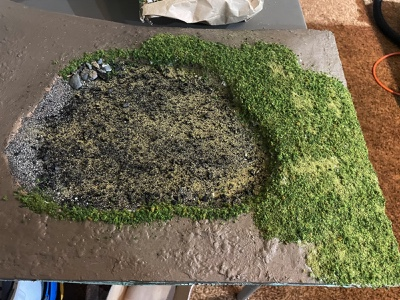 |
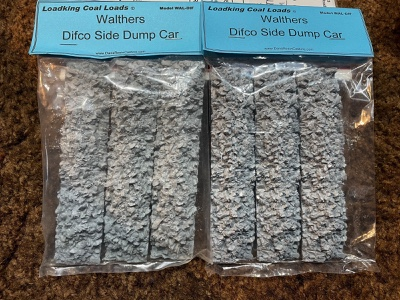
|
 |
Next, Scenic Express flocking material and Woodland Scenics brown turf is applied around the pond. John ran out of time on the project and will resume next week. |
Jeff McCrea was kind enough to buy John resin rip rap loads for his Difco dump cars. Little did Jeff know, John already purchased different ones from another company. John will hold onto Jeff's loads and swap them out with the other ones when MOW work requires larger stone. |
John purchased these Difco dump car loads from F&N Hobbies. Although they look great, the stone is smaller than typically used by the Alaska Railroad. |
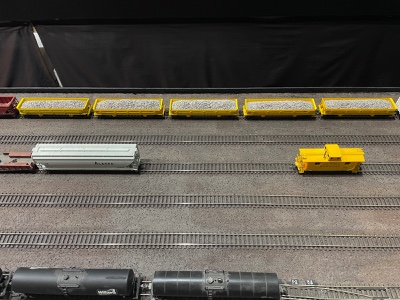 |
 |
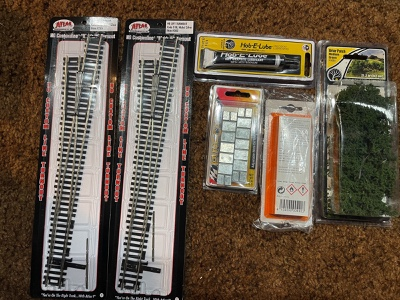
|
Here are the F&N Hobbies (formerly Motrak Models #81708) HO scale gravel loads in the Difco dump cars. |
And here is a close up view of the gravel load. Next week John will get a photo of the two different load types side-by-side. |
Just an FYI - John made yet another hobby store purchase, this time picking up two (oops I only needed one!) left high speed turnouts, car weights, quick setting adhesive, graphite and brier patch scenic material. |
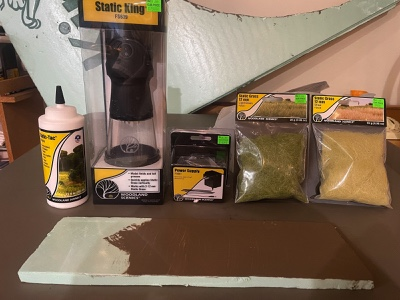
|
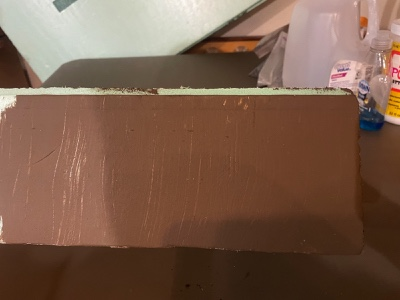 |

|
| Part of Terry's cabin scene is tall field grass. John first wanted to experiment on scrap material before working on the actual scene. Materials used was static grass adhesive, static grass applicator and static grass. Although the applicator can be battery powered, the 110 volt plug produces better results. | In anticipation of this project, John had painted scrap foam board with the same brown paint used on Terry's cabin scene a month or so ago. Not pictured: John spread static grass adhesive on part of the scrap material. | After loading the applicator with 12mm grass, John placed the electrical anchor (at right) in the adhesive and used the applicator (at left) to sprinkle the grass in place. An alligator clip with wire connectors the anchor to the static grass applicator. Note to John: sand the black paint off the anchor for better conductivity. |
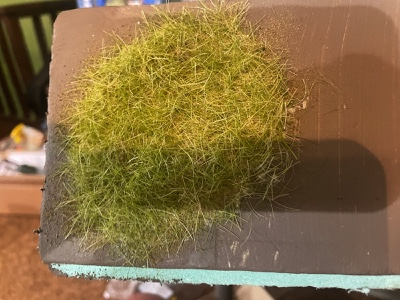 |

|
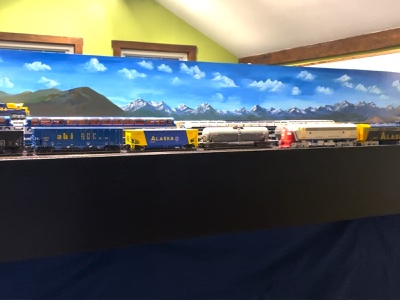 |
| The finished product is not satisfactory as brown paint can be seen easily through the grass. After doing some research, John found a technique where 2mm grass is first applied before applying the longer grass. Lesson learned. | Although the overhead view is a little disappointing, the side view is great! Scissors can be used to trim super long grasses, like the one at right, to desired height. | Video: During train night, Rick ran a consist of cars recently repaired at the Eppley Shops. The passenger cars received washers to adjust coupler height. The flat car had a high coupler so a washer was removed and filed down. The two hoppers received coupler shims. The lumber car had shims added under the couplers. Finally, the silver hopper had air hose adjustments. |
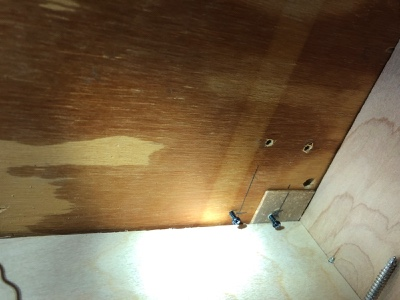 |
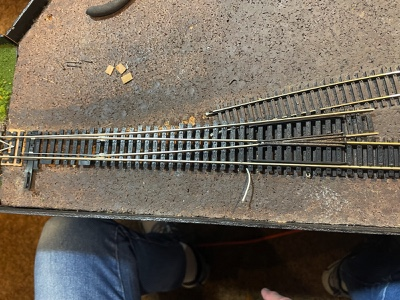 |
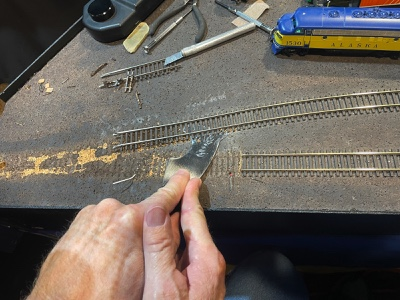 |
| The turnout on the main leading into the north end of the Anchorage yard has caused problems since day one. After years of numerous repairs and tweaks, we finally threw in the towel and bought a new high speed turnout. Rick surveyed its Tortoise switch machine under the layout and found removing its screws difficult as two of them were almost into the L girder frame. After exerting lots of muscle, the pesky screws finally were extracted. The above photo shows how close the two screw were to the woodwork. Not much room for a screwdriver! | Using a putty knife, Rick removed the old turnout. Thank goodness ballast had not been laid yet! Procrastination pays. The new turnout was put into place for a test fit while extending over top of the mainline existing track. | Next, Rick removed the desired section of the main track and then turned his attention to track removal on the siding. |
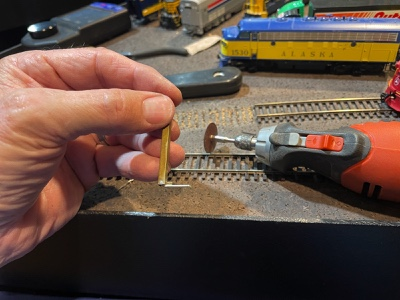 |
 |
|
| Here is a photo of a tool Rick created to put rail joiners in place. Copper tubing was soldered onto a metal piece used to push the joiner into place. | Video: A test train shows the new high speed turnout functions well on the main. Next week Rick will reinstall the Tortoise switch machine as well as laying track connect into the siding. |